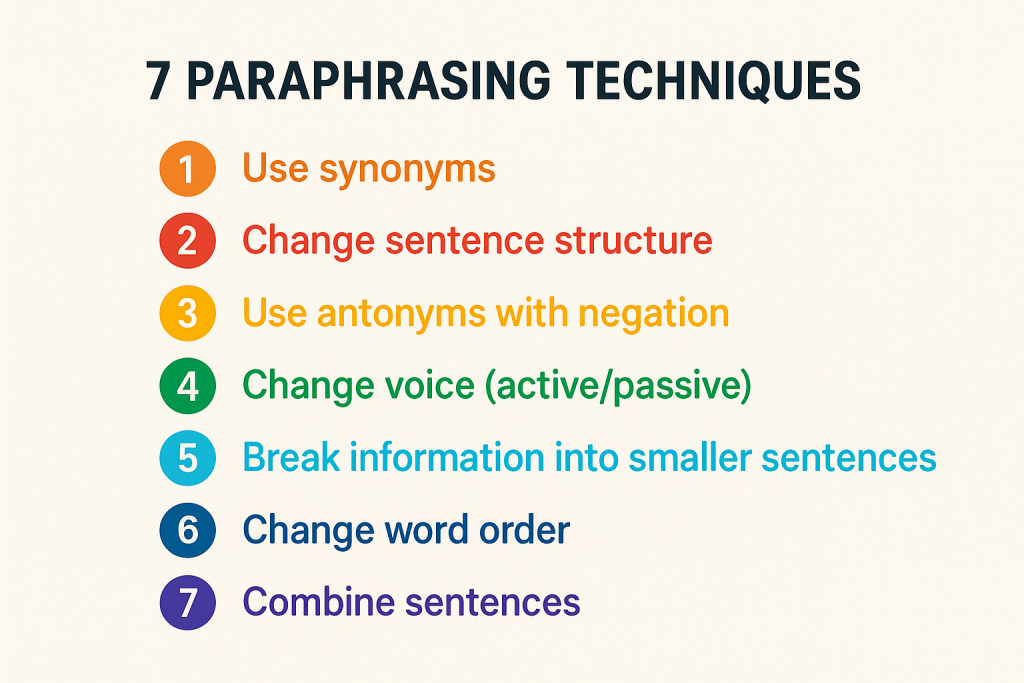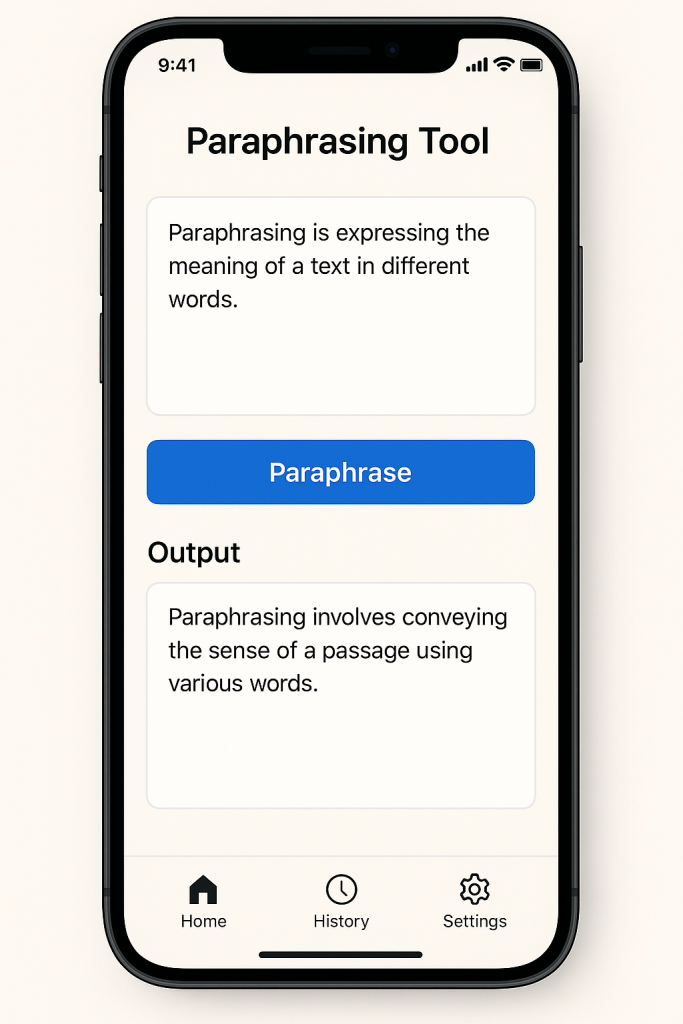Paraphrasing isn’t just twisting words until they squeal. It’s a low-key superpower—one that makes your writing sharper, clearer, and slightly more respectable. Whether you’re a student terrified of plagiarism police, a writer trying to sound original, or a content creator drowning in deadlines, good paraphrasing saves your bacon.
Of course, doing it manually can feel like carving marble with a spoon. But don’t spiral. This post breaks down how to paraphrase without having a meltdown, shares concrete rewriting strategies, and throws in a lifeline: a paraphrasing tool that doesn’t require snacks or sleep.
What Is Paraphrasing and Why It Matters
Paraphrasing is basically rewriting content in your own words while keeping the meaning intact. Not as exciting as skydiving, but arguably more useful.

Here’s why it matters:
- Dodge plagiarism like the sneaky academic ninja you are.
- Make complex ideas digestible—like turning a dense textbook into a TED Talk.
- Avoid being boring. Seriously.
Even The Purdue Online Writing Lab agrees—paraphrasing shows you actually understand stuff, not just that you know how to Ctrl+C and pray.
Need more nerdy backup? Check this academic writing style guide.
Effective Paraphrasing Techniques for Better Writing
1. Twist the Sentence Structure
Flip it, invert it, shake it like a snow globe.
- Original: Paraphrasing helps writers avoid plagiarism.
- Paraphrased: Writers use paraphrasing to steer clear of plagiarism.
2. Smart Synonym Swaps
Replace key terms with alternatives that don’t sound like you used an online thesaurus while blindfolded.
- Original: The tool simplifies the process of rewriting.
- Paraphrased: The software streamlines the content rephrasing process.
3. Play With Voice (Not the Singing Kind)
Switch between active and passive voice like a grammar DJ.
- Original: The students paraphrased the passage.
- Paraphrased: The passage was paraphrased by the students.

4. Break It Down
Long sentence? Chop it up. Readers have attention spans of squirrels.
- Original: Because paraphrasing helps avoid plagiarism, it is considered an essential academic skill.
- Paraphrased: Paraphrasing helps avoid plagiarism. That’s why it’s an essential academic skill.
5. Fuse Ideas Together
Smush multiple boring sentences into one competent one.
- Original: The software is fast. It saves time. It’s easy to use.
- Paraphrased: The software is quick, efficient, and user-friendly.
6. Define Terms Instead of Copying Them
Explain instead of echoing.
- Original: Plagiarism is a serious academic offense.
- Paraphrased: Using someone else’s work without credit—plagiarism—is a major academic offense.
7. Summarize When You’re Tired
Don’t overdo it. Sometimes, less is more.
- Original: The article discusses quoting, paraphrasing, and summarizing to avoid plagiarism.
- Paraphrased: The article outlines strategies to avoid plagiarism.
Common Paraphrasing Mistakes to Avoid
- Thesaurus Overkill: Replacing “important” with “significant, consequential, and paramount” doesn’t make you Shakespeare.
- Half-Baked Rewrites: One-word changes don’t count. Ever.
- Killing the Meaning: Don’t accidentally paraphrase your way into nonsense.
- Grammar Crimes: If your version breaks English, go back.
Tools and Methods to Improve Your Paraphrasing Skills
Manual paraphrasing is noble. But so is efficiency.

Here’s what our paraphrasing tool does better than your caffeine-deprived brain:
- Generates multiple rewrites instantly
- Saves your time and probably your GPA
- Offers suggestions, not commands (no AI tyranny here)
Also, if grammar’s not your strong suit, let our Grammar Checker clean up after you.
Want to compare your brilliant rewrites with more examples? Head to Grammar Monster. Yes, that’s a real site.
Quotes That Make You Sound Wiser Than You Feel
“The skill of writing is to create a context in which other people can think.” – Edwin Schlossberg
“Good writing is clear thinking made visible.” – Bill Wheeler
Pretend you said these. I won’t tell.
Future Blog Topics You’ll Pretend to Read
- How to Avoid Plagiarism in Academic Writing
- Top Tools for Content Creators in 2025
- Summarizing vs. Paraphrasing: Know the Difference
Curious about sentence structure? Read our post on simple sentences in English. It’s more fun than it sounds. Barely.
Final Thoughts (And Yes, This Is a CTA in Disguise)
You’ve learned the dark art of paraphrasing. You’ve endured my sarcasm. Now go forth and rewrite responsibly.
And when your brain starts sounding like dial-up internet? Fire up our paraphrasing tool. It doesn’t judge you. I do, but it doesn’t.
Rewrite smarter, not harder.
FAQ
Q1: What is paraphrasing in writing?
Paraphrasing means expressing the same idea in different words while keeping the original meaning intact. It helps improve clarity and avoid plagiarism.
Q2: Why are paraphrasing techniques important?
They help you write more clearly, show your understanding of the content, and ensure originality in academic and professional work.
Q3: How can I paraphrase effectively?
Read the original text, understand it fully, then rewrite it using different sentence structures, synonyms, and simplified phrasing without changing its meaning.
Q4: What is the difference between paraphrasing and summarizing?
Paraphrasing restates the same details in new words, while summarizing condenses the content into a shorter form with only the main points.
Q5: Are paraphrasing tools reliable?
They can be helpful for generating ideas, but you should always review and adjust the results to ensure accuracy, tone, and style fit your purpose.
